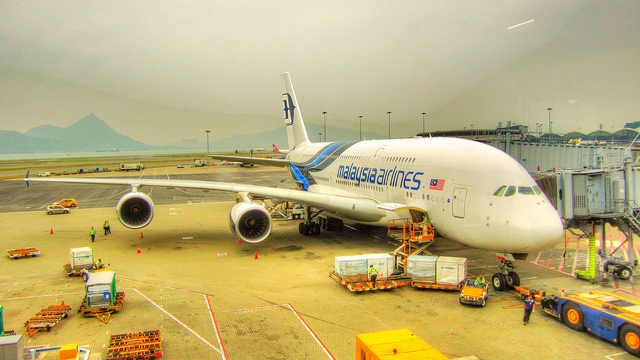
Malaysian Airlines to Dump Part of Long Haul Fleet
Malaysia Airlines is now a household name for all of the wrong reasons. Unfortunately last year’s two tragedies involving their planes has taken a huge toll on the company. I reported last year that the company was de-listed from the stock market and laid off 30% of their workforce. Since then things have not improved and today there are reports that the troubled airline is looking to dispose of a lot of their long haul fleet.
According to Leeham News & Comment, the company is looking to lease or sell all six of their A380s along with 4 B777-200ER. They are also looking to get rid of their entire freighter fleet which consists of 2 B747-40F and 4 A330-20F airplanes.
The real interesting part of this story is the A380s in my opinion. As Leeham news points out, getting these planes would allow an airline to test the model without the expense of purchasing new. Can you imagine one of the U.S. carriers getting these planes? Perhaps Malaysia’s OneWorld partner American?

I actually don’t believe that American will buy the A380s, but it will be interesting to see where they go. Those six planes are very new with four of them being manufactured in 2012 and the other two in 2013. They still have a lot of flying left in them.
The real question now is does Malaysian Airlines have a lot of flying left. It seems that all we continue to hear is bad news about the airline. It really is a shame because I enjoyed flying with them a couple of years ago and wouldn’t hesitate to do it again.
After these aircraft are sold or leased, Malaysian’s long haul fleet will consist of 9 777-200ERs and 15 A330-300s. What do you think? Which airline do you think will buy the A380s? Let me know in the comments!



hi Shawn, I believe the Turkish deal went sour. Maybe Airasia X will either lease or buy the six relatively new A380 for their upcoming London and USA flights . No need to deregister since in 9M- ,just change of ownership. Hope it will work out coz I am an Allstars ie staff of the low cost carrier.
I heard that one or two of them would be going to Turkish on a long term lease
I’m not sure what engine provider Malaysia chose for their A380, but if it is the same as Qantas, they might be interested. They recently had a maintenance issue on one of their birds and had to swap a daily OZ-LAX flight to a 747. Having an extra one might give them a little more leeway. Reconfiguring the interior could be cost prohibitive though, so who knows.
The 380s are going to be a bear to sell – especially with the resale market ON 380s being lean & difficult to find buyers for. Emirates is against purchasing the fleet for two reasons: Comparability with their own metal, and 2.) They only want new-build aircraft from Tolouse. Malaysian spent a fortune outfitting & customizing these planes to their own needs (a double-sized water system; upgraded electronics package & generators, etc.) which make them difficult to unload on other carriers. It is just like Scandinavian’s A300s back in the 80s – so custom built that they won’t fit directly into any given airline fleet, despite a good sale price.
As for Malaysian, they are struggling – I would not be surprised if IAG or another conglomerate carrier chooses to buy them at a value price, rebrand them & use them as a feeder for a larger network style carrier or system. IAG has already shown interest in smaller struggling carriers beyond BA in the form of Vueling, Iberia & AerLingus – so this may be the opportunity to give them a network carrier in the SE Asian corridor. It would be a good fit for them to have an owned-status partner in the iAG to shore up oneWorld’s Asian partners, and to allow them to stabilize the tailspin through synergies, cross-branding & corporate realignment.